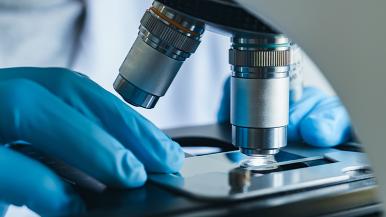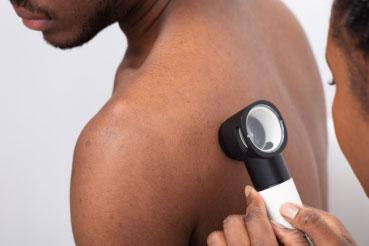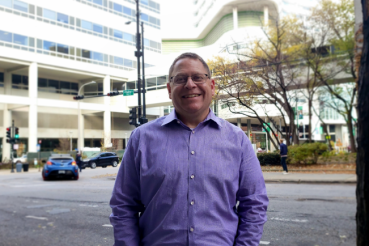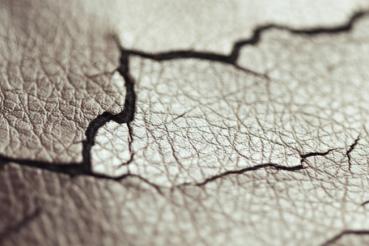One in five Americans is likely to get skin cancer in their lifetime, making it the most common type of cancer in the U.S. But the good news is that it’s highly treatable when caught early, especially if it can be treated with Mohs micrographic surgery.
This treatment allows a physician to precisely remove the cancer and make sure all the cancerous cells are gone before the patient leaves the office.
“Mohs surgery ensures complete cancer removal with confirmation on the same day of surgery, while minimizing the amount of healthy tissue removed,” says RUSH MD Anderson Cancer Center dermatologist Mariam Mafee, MD. “Additionally, the wound is typically closed on the same day as removal, often by the same Mohs surgeon.”
If your physician recommends this treatment for you or someone you know, or if you’re considering whether it’s right for you, here are answers to some of the most frequently asked questions about Mohs micrographic surgery.
1. What is Mohs micrographic surgery?
Named after Frederic Mohs, MD, Mohs micrographic surgery was first developed in the 1930s. Back then, a specialist would examine a tissue sample under a microscope to see cancerous cells in real time.
Today, this technique is still used to treat skin cancer by removing cells and examining them under a microscope. A surgeon will use this treatment to make sure all the cancerous cells have been removed.
This allows the provider to remove the cancer, process it and give the patient results. Then if more tissue needs to be removed, the physician repeats the process again.
Alternative surgeries to Mohs may require the surgeon to take more healthy skin and wait several days before confirming all cancer has been removed.
2. What are the benefits of Mohs micrographic surgery?
Mafee notes that Mohs micrographic surgery is more effective at removing certain skin cancers than many other treatments. Other procedures can result in either having to remove more skin than necessary or not being able to remove all the cancerous cells and requiring another procedure.
An additional benefit is the quick nature of the procedure and healing process.
As an outpatient procedure, once the physician confirms they’ve removed all the cancerous cells, patients can go home the same day. Within two weeks, patients can usually get back to their regular routine.
3. What kinds of cancer can Mohs treat?
Mohs surgery is typically used to treat squamous cell carcinoma and basal cell carcinoma, often on the head and neck because it allows the surgeon to make a smaller, more precise excision, and scarring is minimal. It can also be used on the hands, feet or genitals, where it is important to preserve as much non-cancerous skin as possible.
Mafee notes that some uncommon tumors may also be treated with Mohs surgery, including dermatofibrosarcoma protuberans (DFSP), mucinous carcinoma and atypical fibroxanthoma.
4. How long does the procedure usually take?
Mohs micrographic surgery is an outpatient procedure that allows patients to go home the same day they get treatment.
“On average, patients should expect to be in the clinic for three hours; however, this can vary from patient to patient,” Mafee says. “We advise patients to leave the day open of any other obligations.”
The skin cancer removal generally takes only about five to 10 minutes, but preparing and analyzing the tissue under the microscope takes about 45 to 60 minutes.
Most of the time you spend in the office will be waiting for results.
“If more cancer needs to be removed, the process is repeated until the margins are clear of any cancerous cells,” Mafee says.
The final step, which is closing the incision, generally takes about 30 to 60 minutes.
5. What is the success rate of Mohs in completely removing skin cancer?
The good news is that most skin cancers can be cured if found and treated early. This is especially true for cancers that can be treated with Mohs micrographic surgery.
In fact, Mohs surgery has the highest cure rate of all procedures for the types of skin cancers it is used to treat, which is about 97% to 99%.
With other skin cancer removal surgeries, the success rate is around 90% to 95%, which means there’s a 5% to 10% chance that the cancer can come back and require more extensive treatment.
6. Is recovery painful, and will there be any side effects?
Unlike many complicated, extensive surgeries, Mohs surgery is an outpatient procedure that allows patients to go home the same day. But before you leave, your physician will go over what to expect and talk about ways to manage any post-operative pain.
“Most patients have mild pain for one to three days, which is treated with over-the-counter acetaminophen,” Mafee says.
Possible side effects are the same as what you might experience with any kind of surgery, including moderate pain, bleeding, infection, numbness, redness or scarring. Your physician will advise you on ways to reduce and avoid these side effects.
7. Who is at the highest risk for skin cancer that may need treatment with Mohs?
It’s important to remember that anyone can get skin cancer, even people with darker skin. But patients with lighter skin are at higher risk.
Other risk factors include a history of sunburns, tanning bed use and previous instances of skin cancer.
If you check your skin and see any new, growing or changing moles, you should see a dermatologist for an examination. “Spots that bleed or do not heal may also be a sign of skin cancer,” Mafee says.
That said, not all skin cancers qualify for treatment with Mohs surgery. “Patients with a recent skin cancer diagnosis should consult with their dermatologist to pick the best treatment for their cancer,” Mafee says.
8. Is there anything patients who’ve had Mohs surgery can do to prevent further skin cancer?
There are many ways to reduce your risk of skin cancer whether you’ve had Mohs surgery or not. Previous instances of skin cancer will increase your risk, so it’s especially important to keep yourself as safe as possible.
“Minimizing sun exposure is one action that patients can take to prevent further damage and future skin cancers,” Mafee says. “This includes avoiding the sun during peak hours, from 10 a.m. until 2 p.m., and seeking shade when possible.”
Mafee also advises wearing clothing that covers the skin, including wide-brimmed hats, long sleeves and pants that cover the legs.
“For the areas that cannot be covered up with clothing, sunscreen with SPF of at least 30 is helpful with reapplication every two hours,” Mafee says.
Regular mole checks and an annual appointment with a dermatologist can also help you catch skin cancer early, which makes treatment even more effective.
You can learn more about this procedure on Rush’s Mohs micrographic surgery page.
To see a Rush dermatologist who can help find out if Mohs micrographic surgery is right for you, or to refer a patient for Mohs micrographic surgery, call (312) 947-MOHS or (312) 947-6647.




